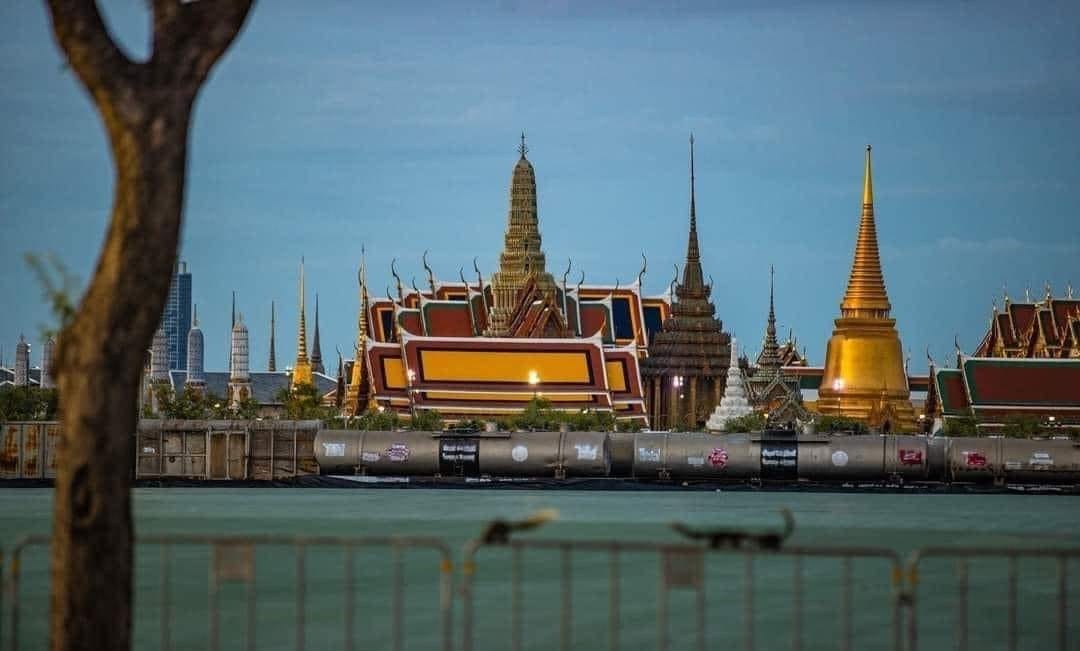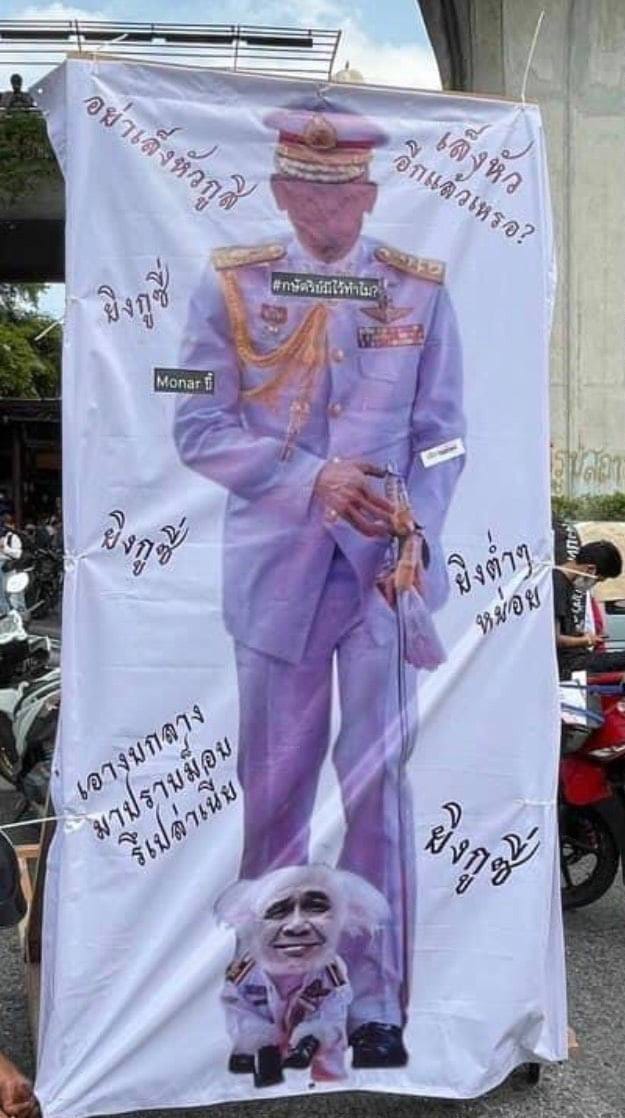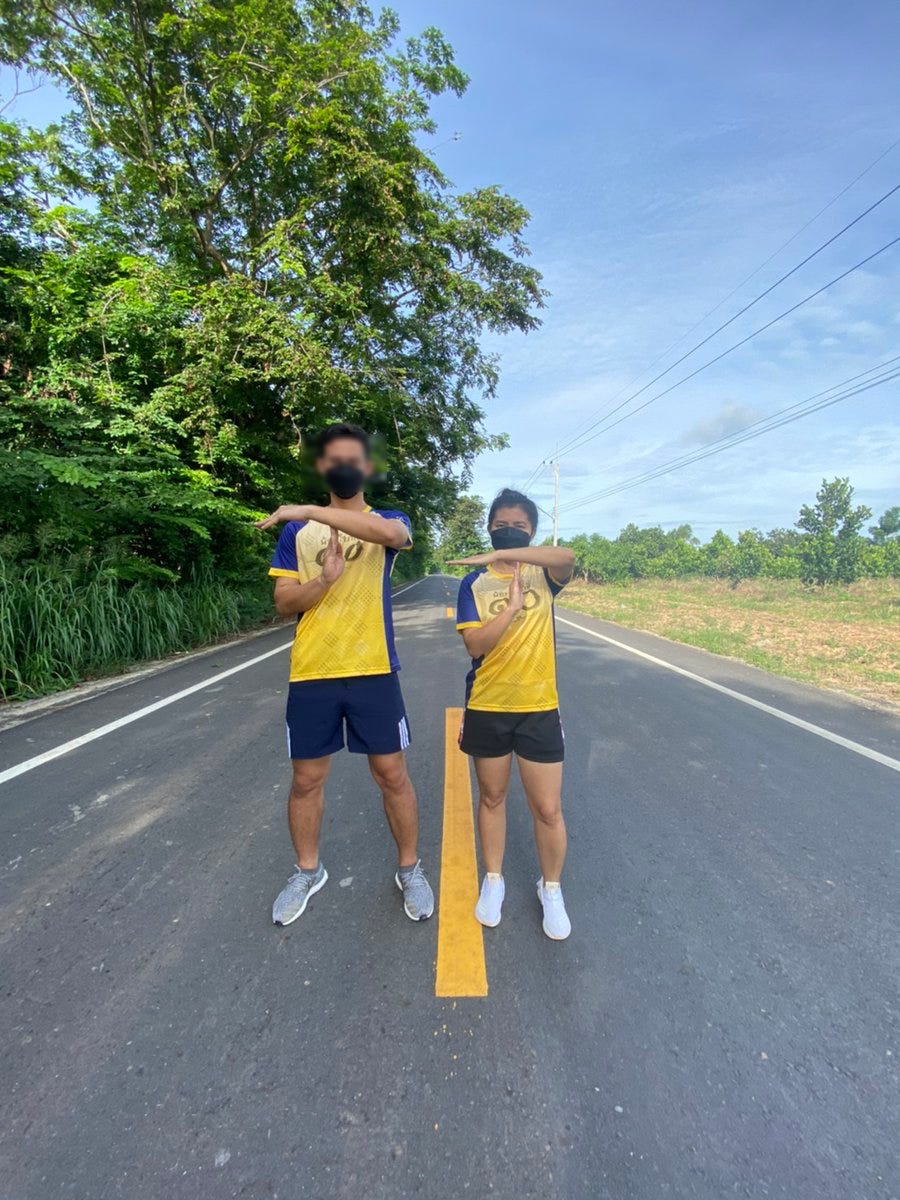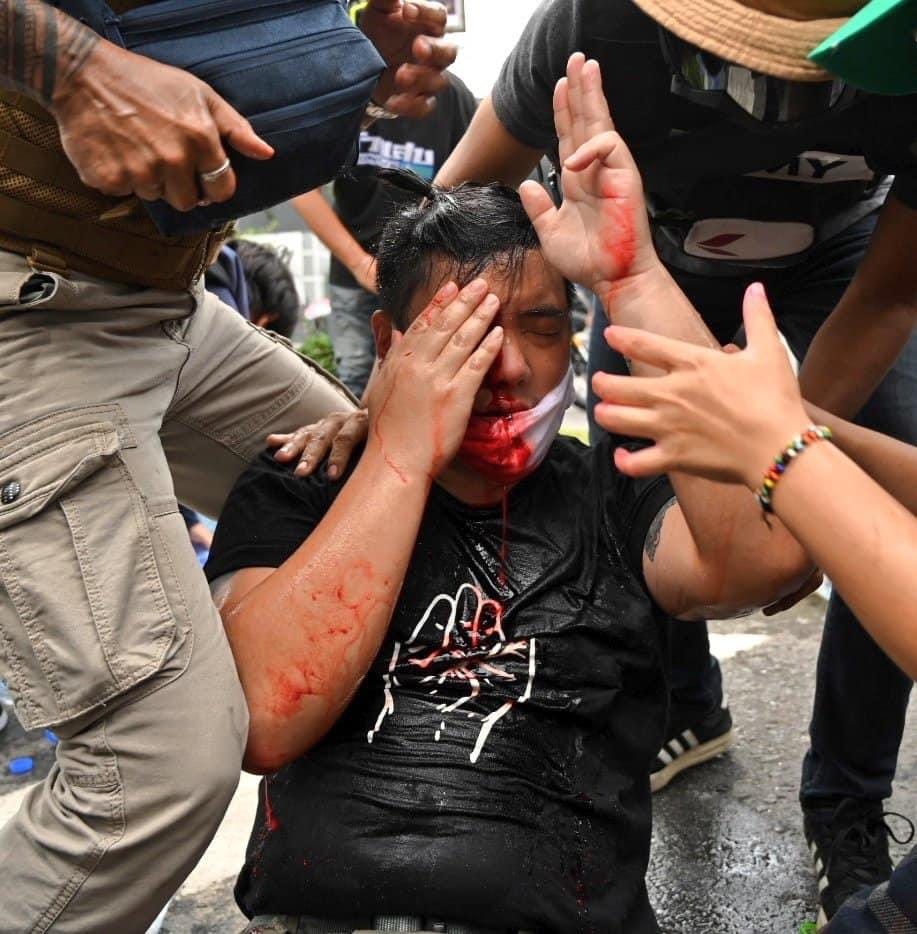Bangkok at boiling point
The political temperature is rising in Bangkok after 10 days of demonstrations and nightly skirmishes as police crack down on protesters with indiscriminate attacks using rubber bullets, tear gas and water cannons.
On August 7, the Free Youth movement announced a march from Democracy Monument to the Grand Palace. It has long been clear that King Vajiralongkorn has some kind of superstitious belief that protesters must be prevented from reaching “royal ground” at all costs, and so vast walls of shipping containers are regularly erected to block their path. On the night before the planned march, disused train compartments were trucked into the royal district too and installed as a further defensive shield.
The paranoia of the palace could hardly be clearer.
On one set of shipping containers, a banner was hung with the strange slogan: “The king's soldiers and the (good people’s) police are united to defend Wat Phra Kaew and the Grand Palace.”
The phrase “คนดี” or “good people” is how Thailand’s elite royalists refer to themselves, to contrast themselves with those who supported Thaksin Shinawatra, or students who want democracy, who they regard as “scum of the earth”. Vajiralongkorn infamously told Thais to vote for “good people” ahead of the March 2019 general election, and now the palace is using more clumsy slogans to try to unite royalists behind the monarchy.
From early in the morning, Democracy Monument was sealed off by hundreds of riot patrol police, and it was clear that protesters would struggle to get anywhere near the Grand Palace. In the current volatile political atmosphere, it could also have led to a particularly violent response. At previous protests that came close to the palace, ominous groups of plainclothes men gathered behind police lines as another line of defence sent by the king.
So the protesters decided to change the whole plan — instead they would gather at Victory Monument and march to the 1st Infantry Regiment barracks on Vibhavadi Rangsit Road, where prime minister Prayut Chan-ocha has lived for more than a decade even though he formally retired from the military in 2014.
Social media like Twitter and communication apps like Telegram make it easy for protesters to coordinate at scale and to swiftly change plans, which they have also done successfully several times before. It’s a smart tactic because it ties up much more of the regime’s resources as every possible protest location must be guarded and police are at constant risk of being wrongfooted.
Over the past couple of months, activists have been concentrating more on demanding Prayut’s resignation over mismanagement of the pandemic than overt calls for royal reform, but some of the banners at the rally sent a pretty clear message to the monarchy.
Although the protesters had abandoned their plan to march to the Grand Palace, the king doesn’t want them getting anywhere near Prayut’s home either. This has nothing to do with any loyalty to the prime minister, who is likely to be abandoned by Vajiralongkorn at the opportune moment. But because the 1st Infantry Regiment has become part of the King’s Guard 904, the special force which the king uses to control Bangkok and prevent any reformist coup from toppling him, he regards the regimental compound as royal ground too, which must be protected.
So when activists began marching towards the compound, the police unleashed a grossly disproportionate crackdown, with tear gas, water cannons laced with chemicals, and rubber bullets. A group of hardcore protesters, many of them vocational school students, fought back with firecrackers and stones. Discussing these protesters on Facebook, journalist Pravit Rojanaphruk explains:
They are mostly working class teenagers (a number of them have small motorcycles making them very mobile when confronting police), their families are among the most affected by the economic crisis due to COVID-19 mismanagement. They are not middle-class intellectuals or students from Chulalongkorn or Thammasat Universities like those leading the call for monarchy reform.
They don't take orders from middle-class protest leaders… They have their own way of expressing themselves and it is through the willingness to violently confront riot police with slingshots, fireworks, rocks, bricks, water bottles, wooden and metal sticks and burning symbols of police…
In the skirmishes, a police truck was set ablaze at Victory Monument.
On the same day, the Ministry of Tourism and Sports ordered all its government officials to wear a T-shirt that says “I'm loyal to 10” and post images on social media. In some images people made a “T” sign with their arms, also signifying ten.
The same pattern has been repeated almost every day since the August 7 rally. Protest groups gather — often using “car mob” tactics in which they drive vehicles around the city — and then when they try to get close to the 1st Infantry Regiment compound, the police launch a heavy handed crackdown and the situation degenerates into clashes that continue into the evening, usually in the Din Daeng area. Several police booths have been set ablaze.
Although Prayut and police chiefs keep insisting that their tactics conform to “international standards” this is clearly nonsense. Their response is never proportionate and they have also been adopting the dangerous tactics of firing tear gas and rubber bullets from elevated positions at protesters below. This has caused several serious injuries among protesters. Police have also repeatedly fired tear gas into residential compounds around Din Daeng — probably by accident — another clear breach of international standards.

Among the most seriously hurt so far is ultraroyalist-turned-reformist Tanat “Nat” Thanakitamnuay.
Tanat, who I wrote about in my previous news roundup, is a former far-right rich kid who has now formed a group called “Repentant Salim” and led a car mob convoy on August 8. In extraordinary scenes, a group of elderly Red Shirts gave him flowers — former enemies now united against Prayut.
In another protest last Friday, Tanat was hit in the face by a tear gas canister fired by police. He was rushed to Mission Hospital but doctors were unable to save the sight in his right eye.
Besides the violence against protesters, the regime is also locking up the movement’s leaders again.
Parit “Penguin” Chiwarak was not able to attend the August 7 protest because police were waiting outside his house to arrest him. He turned himself in at police headquarters on August 8, and was pictured hugging his mother before going into the building.
Footage shot from outside shows him being assaulted by police after being taken into custody.
The woman screaming is his mother who was helplessly witnessing the scene.
Arnon Nampa was arrested the following day. Others now in custody include Jatupat “Pai” Boonpattararaksa, Panupong “Mike” Jadnok, Nutchanon Pairoj, Sirichai Natueng, Phromsorn Weerathamjaree, Ratsadon Mutelu and Thatchapong Kaedam. All have been denied bail, and it’s clear the regime is returning to its strategy of putting all the main protest leaders behind bars to try to stifle the movement.
The authorities are also threatening the families of activists again, with police considering filing charges against the parents of protesters accused of vandalism.
Amid the chaos, there are still remarkable scenes of ordinary people standing up to oppression, like this woman who blocked police from chasing protesters into a Skytrain station.
An analysis in the South China Morning Post noted that the frequent protests may have accelerated “the countdown towards a crackdown, martial law, and another coup” and quoted journalist Voranai Vajanika:
General Prayut may launch a coup d’etat against himself simply to cancel democracy and declare martial law. Another scenario is a coup by a faction of the military dissatisfied with his management, his rule of the country.
The second scenario is more probable, because Prayut and his cronies have not just lost the support of the public, but also the palace.
In a sign that martial law is getting closer, police say soldiers may be called in to help crack down on protests.
“In the event violence escalates and appears to get out of control, the peace-keeping operation plan will be adjusted by allowing soldiers to fortify the police’s defence against violence,” said Metropolitan Police Bureau commissioner Lieutenant General Pakapong Pongpetra last Wednesday.
The Bangkok Post reported quoted a source saying the plan has already been discussed in a meeting of the armed forces chaired by defence forces chief General Chalermpol Srisawasdi, at which it was agreed that “the military are not responsible for dispersing demonstrators, while they are actually responsible for ensuring security at military areas and the palaces”.
In other words, if protesters keep trying to march to Prayut’s house or the Grand Palace, the army will deal with them. This is a recipe for another massacre like in 1973, 1976, 1992 and 2010.
In an ominous development just as I was about to publish this newsletter, Thai media are reporting that live rounds are being fired at protesters in Din Daeng on Monday evening. I will write more about this once details are clearer.







Inga kommentarer:
Skicka en kommentar